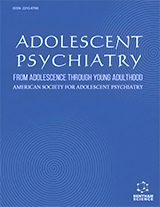Abstract
The use of microbicidal agents for the prevention of HIV-1 transmission and consequent infection is emerging as a promising strategy for controlling this global epidemic. Sexual HIV-1 transmission in resource-limited regions is driven by gender inequalities imposing a particular burden on women and girls. Topical microbicide administration directly to the vagina could play an important role in HIV-1 prevention efforts, as this female-controlled approach leads to high local levels of anti-HIV-1 compounds, while resulting in low systemic exposure. After twenty years of clinical investigation, however, this dosing route has had limited success. In this chapter, we thoroughly review the current state of vaginal microbicide research for HIV-1 prevention. The vaginal route of HIV-1 infection is discussed along with an overview of the classes of microbicides currently under investigation, including: broad-spectrum (i.e., non-specific), specific (e.g., antiretroviral drugs), and biological (peptides, proteins, and bacteria) agents. Dosage forms (tablets/suppositories, films, gels, and intravaginal rings) are discussed along with the merits and challenges associated with each modality. An anatomical, histological, and physiological description of the vaginal mucosa links the applied and fundamental sections of the chapter. An introduction to the interplay between hormone regulation and the vaginal mucosa is provided, accompanied by a discussion of potential biomarkers of inflammation that may be used to evaluate microbicide safety. Host expression of membrane transporters and metabolizing enzymes is reviewed in detail, as both can influence local drug distribution and, hence, pharmacodynamic outcomes in HIV-1 prevention. The vaginal microbiome, and its interactions with the host, are likely to play a pivotal role in topical HIV-1 prophylaxis is discussed. Finally, ex vivo and animal models for evaluating candidate product efficacy are critically reviewed and the current state of clinical vaginal product evaluation is discussed.
Keywords: HIV prevention, intravaginal ring, microbicides, Pre-exposure prophylaxis (PrEP), topical dosing, vaginal epithelial cell culture model, vaginal gel, vaginal microbiome, vaginal mucosa.






















